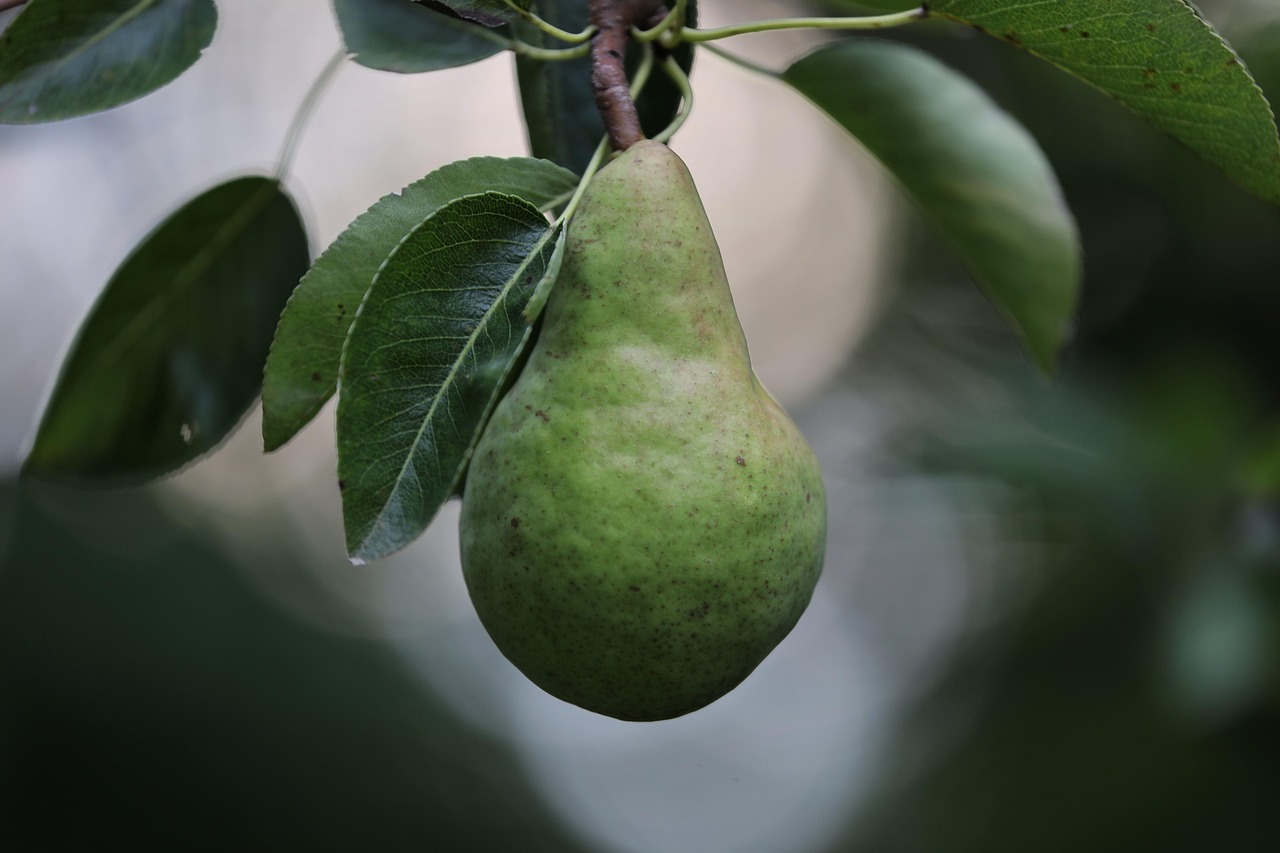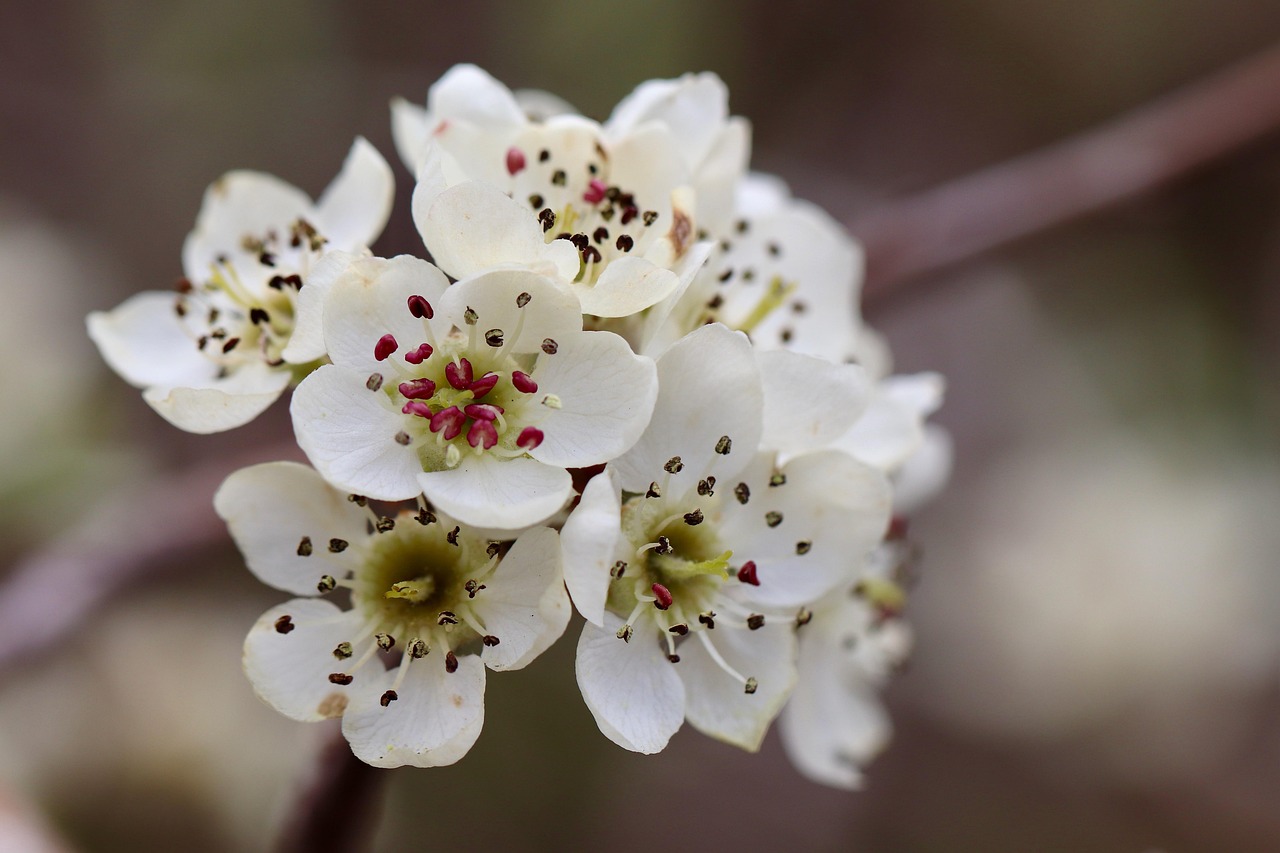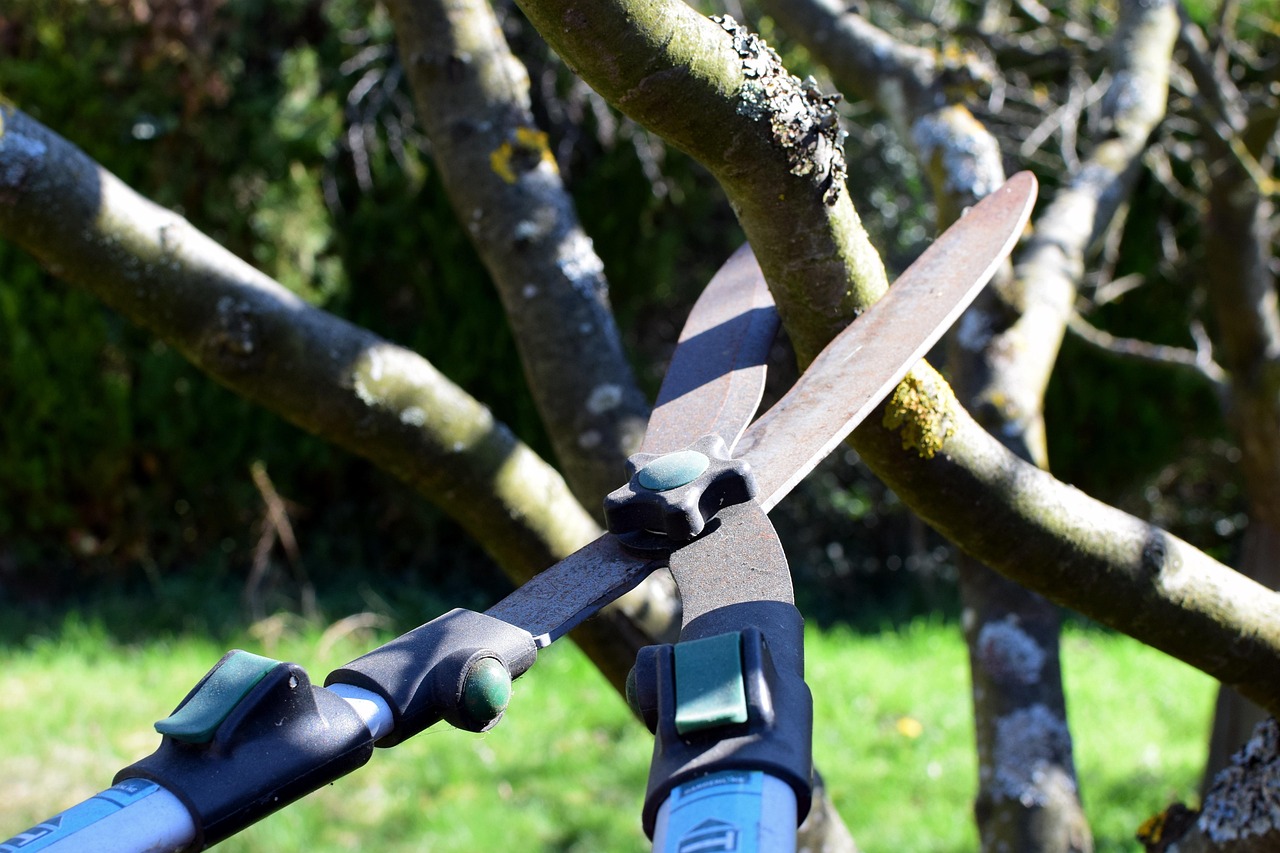Pear tree pruning enhances garden aesthetics by shaping the tree, promoting healthy growth, and improving fruit production. Proper techniques ensure that the tree remains visually appealing while maximizing its health and productivity.
Pruning pear trees is an essential practice for gardeners who wish to maintain their trees not only for fruit production but also for visual appeal. A well-pruned pear tree can be a stunning centerpiece in any garden. The act of pruning involves careful removal of specific branches and foliage to shape the tree, allowing sunlight to penetrate and air to circulate freely. This process is crucial for the overall health of the tree and can significantly impact its flowering and fruiting capabilities.

There are various reasons why pruning is important. It helps in controlling the size of the tree, removes dead or diseased wood, and encourages new growth. Additionally, pruning can enhance the tree’s structure, making it more stable and resilient against wind and other environmental factors. Aesthetically, a well-pruned tree looks neat and tidy, contributing positively to the landscape design of a garden.
Understanding the Basics of Pear Tree Pruning
Before diving into specific pruning techniques, it is essential to understand some key concepts surrounding pear tree pruning. The timing, tools, and methods used can all influence the success of your efforts.
- Timing: The best time to prune pear trees is during their dormant season, typically late winter or early spring before new growth begins. Pruning at this time minimizes stress on the tree and promotes vigorous new growth once the season changes.
- Tools: Essential tools for pruning include sharp bypass pruners, loppers for thicker branches, and a pruning saw for larger limbs. Having clean and sharp tools prevents damage to the tree and helps avoid the spread of diseases.
- Techniques: There are various techniques for pruning, including thinning, heading back, and renewal pruning. Each method serves different purposes in maintaining the tree’s health and appearance.
Understanding these fundamentals sets the stage for effective pruning tailored to your specific pear tree’s needs. Knowing when to prune, what tools to use, and which techniques to apply will ultimately lead to a more beautiful and productive tree.

The Benefits of Pruning for Aesthetic Appeal
Pruning pear trees can greatly enhance their visual appeal. By shaping the tree properly, gardeners can create an inviting look that complements the surrounding landscape. Here are some benefits of aesthetic pruning:
- Improved Shape: Regular pruning encourages a balanced structure. This ensures that the tree maintains a pleasing silhouette throughout the seasons.
- Enhanced Flowering: Pruning stimulates flowering by allowing more sunlight to reach the inner branches. This results in a more vibrant display during blooming seasons.
- Healthier Foliage: By removing overcrowded branches, you allow better airflow and light distribution. This leads to healthier leaves that are lush and green.
A well-pruned pear tree not only looks good but also contributes positively to the overall garden environment. It provides shade, attracts pollinators with its flowers, and produces delicious fruit that can be enjoyed in various forms.
Common Mistakes in Pear Tree Pruning
While pruning is beneficial, it is also easy to make mistakes that can harm your tree. Being aware of common pitfalls can help you avoid them:

- Pruning at the Wrong Time: Pruning too early or too late can lead to stress on the tree, impacting its growth and fruit production.
- Over-Pruning: Removing too much foliage can shock the tree and hinder its ability to produce fruit. Always aim for balance.
- Poor Cuts: Making jagged or improper cuts can create entry points for pests and diseases. Always use sharp tools for clean cuts.
Being mindful of these common mistakes can lead to more successful pruning efforts. With careful attention to timing, technique, and overall health, your pear trees can thrive aesthetically and functionally.
Conclusion on Aesthetic Pruning Techniques
The art of pear tree pruning for aesthetic purposes requires knowledge and practice. By understanding the basics, appreciating the benefits, and avoiding common mistakes, gardeners can transform their pear trees into beautiful focal points in their gardens.
Essential Pruning Techniques for Pear Trees
Understanding the specific techniques for pruning pear trees is crucial for achieving both health and aesthetics. Different methods serve varied purposes, and knowing when and how to apply them can make a significant difference in the final outcome. Below are some essential techniques that every gardener should consider when pruning pear trees.

Thinning Cuts
Thinning cuts involve removing entire branches back to their point of origin. This technique is beneficial for improving airflow and light penetration within the tree’s canopy. Thinning can help reduce overcrowding, which often leads to competition among branches for nutrients and light.
- Benefits of Thinning:
- Enhances fruit quality by ensuring that remaining branches receive adequate resources.
- Reduces the risk of disease by improving air circulation.
- Creates a more open appearance, making the tree visually appealing.
- When to Thin:
- During the dormant season, preferably late winter or early spring.
- After the blooming period, if necessary, to maintain balance in growth.
Heading Back
Heading back is another technique used to prune pear trees. This method involves cutting back the tips of branches to encourage bushier growth. Heading back is particularly useful for controlling the height of the tree and promoting new lateral branches.
- Benefits of Heading Back:
- Encourages denser foliage, making for a fuller appearance.
- Helps maintain a manageable tree height, especially in smaller gardens.
- Stimulates growth of new fruiting wood, enhancing overall productivity.
- When to Head Back:
- Late winter or early spring during dormancy.
- Immediately after fruit harvest to promote regrowth before the next season.
Renewal Pruning
Renewal pruning is a more aggressive method aimed at rejuvenating older trees that may have become unproductive. This technique involves removing older, less productive branches to make way for new growth.
- Benefits of Renewal Pruning:
- Revitalizes older trees by encouraging fresh growth.
- Improves fruit production by allowing younger wood to take over.
- Enhances the visual appeal by refreshing the tree’s structure.
- When to Perform Renewal Pruning:
- Best done during the dormant season to minimize stress on the tree.
- Avoid over-pruning; only replace a few older branches each year.
The Impact of Pruning on Fruit Production
Pruning not only affects the aesthetic qualities of pear trees but also plays a critical role in fruit production. The relationship between pruning and fruit yield can be complex. Here are some key points to consider:
Encouraging Better Fruit Set
A well-pruned pear tree can produce larger and more abundant fruit. By removing excess foliage and branches, you allow the tree to focus its energy on developing fewer, but higher-quality fruits. Some important considerations include:
- Light Penetration: Properly pruned trees allow sunlight to reach all parts of the canopy, promoting even ripening and better-quality fruit.
- Nutrient Allocation: With fewer branches competing for nutrients, the remaining fruits receive more energy, leading to improved size and flavor.
Avoiding Overbearing
Overbearing occurs when a tree produces an excessive amount of fruit in one season, often leading to poor quality and reduced vigor in subsequent years. Pruning helps manage fruit load effectively. Here’s how:
- Thinning Fruit: Removing some developing fruits can help ensure that the remaining ones grow larger and healthier.
- Avoiding Alternate Bearing: Regular pruning can help stabilize production levels from year to year, reducing the risk of alternate bearing cycles.
Seasonal Considerations for Pruning
The timing of your pruning efforts is vital for achieving the best results with your pear trees. Different seasons offer unique opportunities and challenges when it comes to caring for these trees.
| Season | Recommended Actions | Avoid |
|---|---|---|
| Winter | Thinning cuts; heading back | Pruning during frost; heavy cuts on young trees |
| Spring | Final shaping after bloom; light trimming | Heavy pruning while buds are forming |
| Summer | Maintenance pruning; removing suckers | Severe cuts; pruning during extreme heat |
| Fall | No significant pruning; monitoring tree health | Pruning near harvest time |
This table illustrates how seasonal changes impact your pruning strategy. By adapting your methods according to the season, you can help your pear trees thrive while maintaining their aesthetic appeal.
Tools and Equipment for Pruning Pear Trees
Having the right tools is essential for effective pear tree pruning. Proper equipment ensures that the job is done cleanly and efficiently, minimizing stress on the tree and reducing the risk of injury to the gardener. Here are some commonly used tools and their specific uses.
Essential Pruning Tools
- Bypass Pruners: These are ideal for making clean cuts on small branches up to ¾ inch in diameter. Their design allows for a precise cut, which is crucial for promoting healing.
- Loppers: Used for thicker branches (up to 2 inches), loppers provide sufficient leverage to make cuts that are too difficult for pruners. Look for a pair with long handles for added reach.
- Pruning Saw: This tool is necessary for larger branches that exceed the capacity of loppers. A handsaw or a pole saw can be particularly useful for higher cuts.
- Hand Shears: Ideal for light trimming and shaping, hand shears can help maintain delicate branches and foliage.
- Garden Gloves: Protecting your hands is important. Use sturdy gloves to avoid cuts and scrapes while handling tools and branches.
Maintenance of Tools
Maintaining your pruning tools is just as important as having them. Regular upkeep can prolong the life of your tools and ensure clean cuts. Here are some tips for maintaining your pruning equipment:
- Clean After Use: Wipe your tools with a cloth to remove sap and debris after each use.
- Sharpen Blades: Dull blades can damage trees. Sharpen pruners and saws regularly to ensure efficient cutting.
- Disinfect Tools: To avoid spreading diseases between trees, disinfect your tools with a solution of water and bleach or rubbing alcohol before switching between different plants.
Understanding Tree Anatomy for Better Pruning
A good understanding of pear tree anatomy helps in making informed pruning decisions. Recognizing how different parts of the tree function can guide you in selecting the right branches to cut and when to perform those cuts.
Main Parts of a Pear Tree
| Part of the Tree | Description | Importance in Pruning |
|---|---|---|
| Branches | The main limbs that extend from the trunk. | Carefully selecting which branches to prune affects the tree’s shape and fruit production. |
| Buds | Small growths on branches that develop into leaves or flowers. | Knowing which buds are fruiting buds helps in making cuts that enhance fruit yield. |
| Trunk | The central stem that supports the tree structure. | Maintaining trunk health is vital; avoid damaging it during pruning. |
| Roots | The part of the tree that anchors it in the ground and absorbs nutrients. | A healthy root system supports overall tree vitality, influencing how much pruning can be done without stress. |
This table illustrates the key components of a pear tree and their significance during pruning. Understanding these parts can inform better decisions when shaping your tree for both aesthetics and productivity.
The Role of Aesthetics in Garden Design
Pear trees not only provide fruit but also contribute significantly to garden aesthetics. They can serve as focal points, enhance landscape design, and create seasonal interest. Here are some considerations regarding aesthetics in garden design:
Choosing the Right Location
The placement of your pear tree is crucial for achieving visual appeal. Consider these factors when selecting a location:
- Sunlight Exposure: Ensure that the chosen spot receives adequate sunlight, as this influences both aesthetics and fruit production.
- Proximity to Other Plants: Planting near complementary plants can enhance visual interest and provide a more cohesive garden design.
- Visibility: Position your pear tree where it can be easily viewed from key vantage points in your garden, maximizing its impact.
Seasonal Aesthetics
Pear trees offer changing beauty throughout the seasons. Each season brings unique visual characteristics:
- Spring: Blossoms appear, offering a stunning display of white or pink flowers that attract pollinators.
- Summer: Lush green foliage provides shade and beauty, making the tree a perfect spot for relaxation.
- Fall: Leaves change color, showcasing vibrant hues of yellow and orange, while fruits ripen on the branches.
- Winter: The bare branches can offer an interesting silhouette against the winter sky, adding structure to your garden.
This seasonal diversity makes pear trees a valuable addition to any garden, enhancing its overall aesthetic appeal year-round.
Caring for Pruned Pear Trees
Post-pruning care is essential for ensuring that your pear trees recover quickly and thrive. Proper care helps mitigate any stress caused by pruning and supports healthy growth moving forward.
Watering Practices
After pruning, it is crucial to maintain adequate moisture levels in the soil. Here are some watering tips:
- Water Deeply: Ensure that water reaches deep into the root zone, especially if the tree has been heavily pruned.
- Avoid Overwatering: Monitor soil moisture to prevent waterlogging, which can lead to root rot.
- Mulching: Apply mulch around the base to conserve moisture and regulate soil temperature.
Nutritional Support
Your pruned pears may benefit from additional nutrients during their recovery period. Consider these nutritional strategies:
- Fertilization: Use a balanced fertilizer to provide essential nutrients that support new growth and fruit development.
- Organic Options: Compost or well-rotted manure can enrich soil health naturally while providing nutrients over time.
Caring for pruned pear trees ensures they remain healthy and continue to thrive while enhancing your garden’s aesthetic appeal. Every step you take in nurturing these trees contributes to their beauty and productivity in your landscape.
In addition to the fundamental aspects of caring for pruned pear trees, it’s important to focus on long-term maintenance and ongoing aesthetic improvement. Regular attention to your trees will not only ensure their health but also enhance the overall beauty of your garden landscape.
Long-Term Maintenance Strategies
To keep your pear trees looking their best and producing fruit year after year, consider implementing the following long-term maintenance strategies:
Regular Inspection
Conducting regular inspections of your pear trees can help identify potential issues before they escalate. Here are some tips:
- Check for Pests: Look for signs of pests such as aphids or spider mites. Early detection allows for timely intervention.
- Monitor Foliage: Keep an eye on leaf color and texture. Yellowing leaves or spots may indicate nutrient deficiencies or disease.
- Observe Bark Health: Cracks or peeling bark can be signs of stress or disease. Address these issues promptly to avoid further damage.
Seasonal Cleanup
Seasonal cleanup is essential for maintaining the health and aesthetics of your pear trees. This includes:
- Removing Fallen Leaves: Clear away leaves and debris from around the base of the tree to prevent fungal diseases.
- Trimming Deadwood: Regularly inspect and remove any dead or damaged wood to encourage healthy growth.
- Clearing Weeds: Keep the area around your pear tree free from weeds, which can compete for nutrients and moisture.
Adjusting Watering Techniques
The watering needs of your pear tree may change over time as it matures. Consider these points when adjusting your watering techniques:
- Deep Watering: As trees grow, deeper watering may be necessary to reach the root system effectively. This encourages deep root growth.
- Drought Considerations: In periods of drought, ensure that your trees receive adequate water to prevent stress and maintain fruit quality.
Integrating Pear Trees into Your Garden Design
Pear trees can serve multiple purposes in a garden beyond simply producing fruit. Here are some creative ways to integrate them into your overall garden design:
Creating Focal Points
The unique shape and beauty of pear trees make them ideal focal points in garden landscapes. You can:
- Plant in Groups: Grouping pear trees together can create a stunning visual impact, especially during flowering season.
- Add Pathways: Design pathways that lead to your pear trees, inviting visitors to appreciate their beauty up close.
- Incorporate Seating Areas: Place benches or seating near pear trees to create serene spots for relaxation and enjoyment of nature.
Companion Planting
Companion planting involves growing different plants together for mutual benefits. Here are some companion plants that work well with pear trees:
- Herbs: Basil, chives, and thyme can deter pests while enhancing the flavors of nearby fruits.
- Flowers: Marigolds and nasturtiums attract beneficial insects while adding vibrant colors to your garden.
- Ground Covers: Low-growing plants like clover can help suppress weeds and retain soil moisture around the base of the tree.
Final Thoughts
Pear tree pruning is a vital aspect of maintaining both the health and aesthetic appeal of these beautiful trees. By understanding essential pruning techniques, the importance of seasonal care, and long-term maintenance strategies, you can create a thriving environment for your pear trees. A well-pruned tree not only enhances the visual interest of your garden but also contributes to improved fruit production.
The integration of pear trees into your garden design opens up opportunities for creativity and functional beauty. By combining proper care with thoughtful design elements, you can enjoy a flourishing landscape that offers both delicious fruits and stunning visual appeal throughout the year.
In summary, investing time and effort into the pruning and care of your pear trees will yield lasting benefits. Your commitment to their health will result in a vibrant garden filled with life, beauty, and productivity.
